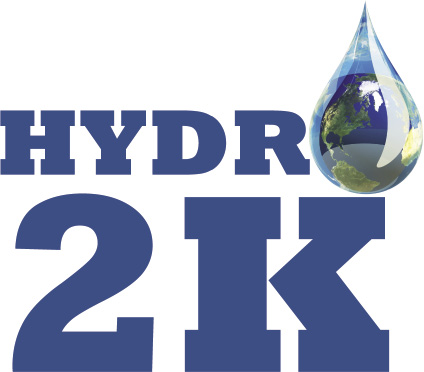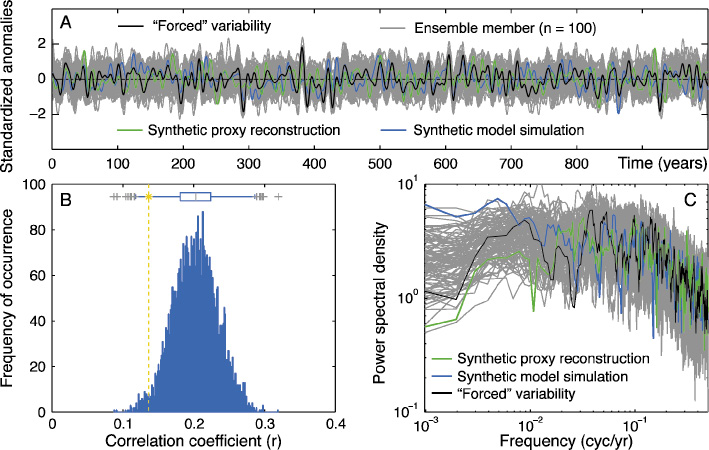- Home
- Publications
- PAGES Magazine
- Hydro2k: Integrating Proxy Data and Models For Insights Into Past and Future Hydroclimate
Hydro2k: Integrating proxy data and models for insights into past and future hydroclimate
Smerdon JE, Luterbacher J & Phipps SJ
Past Global Changes Magazine
24(1)
45
2016
 |
Jason E. Smerdon1, J. Luterbacher2 and S.J. Phipps3
Palisades, USA, 1-3 June 2016
New paleoclimate reconstructions are expanding insights into hydroclimate variability and change during the Common Era (e.g. Cook et al. 2015; Diaz and Wahl 2015). Many last-millennium simulations using fully-coupled climate models are also becoming available (e.g. Fernandez-Donado et al. 2013). Importantly, Phase 3 of the Paleoclimate Modelling Intercomparison Project (PMIP3) included a last-millennium experiment in its protocol, and multiple centers performed the experiment using the same state-of-the-art models used for Phase 5 of the Coupled Model Intercomparison Project (CMIP5). Ensembles of last-millennium simulations (e.g. Otto-Bliesner et al. 2016) are also proposed as part of PMIP4. These developments make the time ripe for expanding our understanding of past hydroclimate variability, while exploring whether climate models simulate hydroclimate in ways that are consistent with the paleoclimate record.
Addressing these emerging themes was the focus of a workshop titled Comparing data and model estimates of hydroclimate variability and change over the Common Era, organized jointly by PAGES 2k and the PAST2k working group of PMIP (see Schmidt et al. 2014 and PAGES 2k-PMIP3 group 2015 for outcomes of related past workshops). The workshop included presentations from paleoclimatologists on hydroclimate proxies and their interpretation, climate modelers on current efforts to simulate climate over the Common Era, and from researchers working at the interface of these two areas (see the full agenda and presentation slides at: http://pages2kpmip3.github.io/). The presentations and associated discussions provided an assessment of the state of the science, the challenges associated with hydroclimate comparisons between proxy information and model simulations, and an evaluation of best practices in this emerging field.
Workshop discussions underscored the nascent stage of data-model comparisons over the Common Era generally, and specifically with regard to hydroclimate. Recommendations include the need to account for internal variability and its influence on comparison outcomes. Internal variability will obscure comparisons between proxy reconstructions and climate model simulations, even if they represent both forced changes and internal variability perfectly (Fig. 1). Analyses that go beyond simple time-series associations are therefore strongly advocated, including bootstrapping exercises to evaluate null hypotheses and assessments based on spectral information. The importance of proxy system models (PSMs) was also stressed. When studying decadal and centennial variability, PSMs allow better accounting of the reddening of climatic signals present in some proxy records. For the emerging area of paleoclimate data-assimilation, PSMs also account for the multiple environmental variables often integrated by proxies. Generally, comparison efforts should include as many models as possible, while incorporating the collection of ensemble simulations from individual models. Spatial sampling should be done carefully, keeping in mind that local associations do not necessarily scale regionally or globally (and vice versa). These general points of guidance and the emerging efforts to refine techniques for hydroclimate data-model comparisons will further enhance our ability to evaluate climate models, understand the dynamics of hydroclimate variability and change, and constrain our characterizations of climate risks in the future.
Acknowledgements
This workshop was made possible by PAGES and the Climate Center at the Lamont-Doherty Earth Observatory.
affiliationS
1Lamont-Doherty Earth Observatory of Columbia University, Palisades, USA
2Department of Geography and Centre for International Development and Environmental Research, Justus-Liebig-University Giessen, Germany
3Institute for Marine and Antarctic Studies, University of Tasmania, Hobart, Australia
contact
Jason Smerdon: jsmerdon ldeo.columbia.edu
ldeo.columbia.edu
references
PAGES 2k-PMIP3 group (2015) Clim Past 11: 1673-1699
Cook ER et al. (2015) Sci Adv 1, doi:10.1126/sciadv.1500561
Diaz HF, Wahl ER (2015) J Clim 28: 4637-4652
Fernandez-Donado L et al. (2013) Clim Past 9: 393-421
Otto-Bliesner BL et al. (2016) BAMS 97: 735-754
Schmidt GA et al. (2014) Clim Past 10: 221-250

